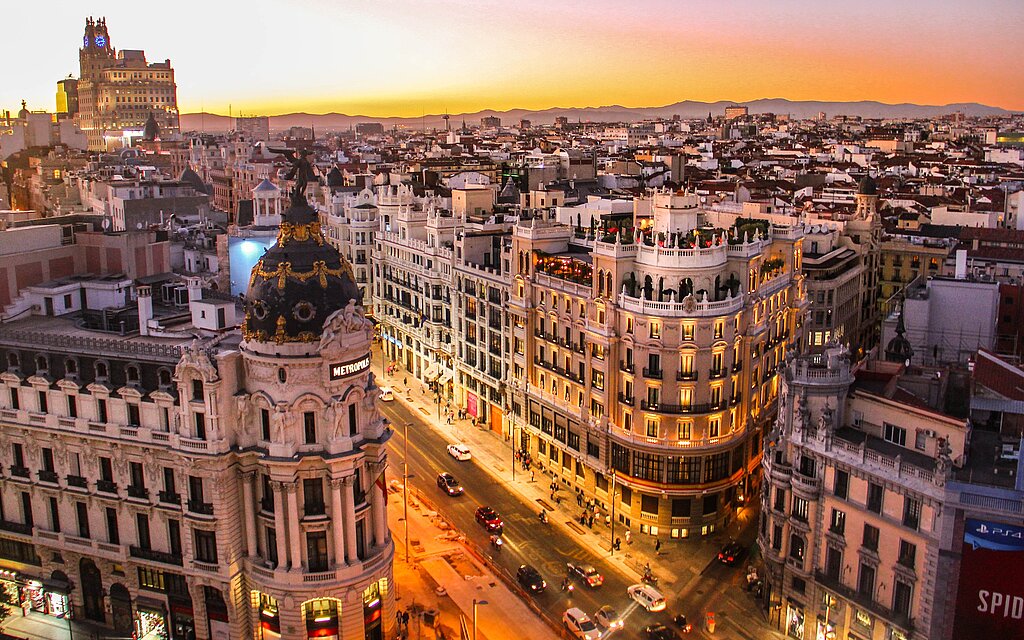
25.09.2018
Multifunctionality in urban spaces
In our three-part series we use the example of public space to examine the interlinked, efficient and liveable city of the future.
Now more than ever, everyone is talking about the term “Smart City”. As a designated expert, how do you interpret this concept?
Prof. Heuser: As it is used and understood today as a technical term, the term Smart City primarily refers to the digitalisation of cities. At the beginning of the Smart City movement about seven or eight years ago, the topic “smart” was also discussed on a broader scale in the sense of smart people and smart citizens. These days, it has become apparent that Smart City refers to the digital transformation of the city, and this meaning is now generally recognised. Digital transformation covers all areas of a city, from administration and public infrastructure to real estate – everything that makes up a city.
What drives a city to become a “Smart City”?
Prof. Heuser: It’s specific issues that can be better solved using digitalisation. There’s no city that says to itself, “I need to digitalise now.” The reason to do so is always a specific action area that calls for a solution. The action areas are strongly influenced by the ongoing growth of many cities, as is also the case in Germany in particular. The trend towards urbanisation is still there, and this growth is also placing greater demands on the infrastructure, more than was the case in the past.
That means more traffic, more photovoltaic systems on roofs, simply more of everything. The existing infrastructure is not designed for this and now has to “play catch up”, so to speak. In this process, it becomes clear that digitalisation is much more efficient than proceeding in the conventional manner. Here’s an example: You can’t just add another lane to a road. Consequently, you have to think of other ways to address traffic issues.
Digitalisation, that is, making digital information available, is now playing a key role here. The situation is similar concerning parking. Nowadays, searching for a parking space is based on the principle of hope. I know about where there might be a parking space and hope I’ll find one there. That’s what it is like in the totally analogue world – we don’t actually have any information.
Through digitalisation, we’ll receive information in real time. We won’t just hope; we’ll know. We’ll make our decisions based on this knowledge. And this decision is an educated decision. The decision has incorporated the knowledge, so to speak, and makes more sense than previous decision-making based on the principle of “I’ll give it a try; it’ll work out somehow”.
My theory is that as long as I’m not sure what is going on in the city, I’ll always hope that things will be diff erent just for me. But if I now have the information that the city is at a standstill – due to a traffic jam, for example – I will make decisions that are better for me and choose appropriate alternatives. The key message here is that we have to get away from the principle of hope.
There’s more though: All of us are already using digitalisation to a great extent in our private lives, namely when we want to have current information immediately. Communication channels such as Twitter ensure that everything happens in the here and now. Only the city continues to speak in a completely analogue language, and through digital transformation we need to bring cities up to where we have been in our private lives for a long time. It is about transforming the principle of hope into an “educated decision” and making sensible decisions on the basis of knowledge.
What are the advantages for cities and their residents and visitors?
Prof. Heuser: It is very important that we tackle the big challenges facing cities today together. For example, we need to get a grip on the traffic situation. We cannot continue with the mobility consumption we are used to today.
Cities like Munich predict an increase in commuting times in the morning and evening to theoretically four hours. These are numbers beyond comprehension. You simply would not be able to get to your workplace on time, or you would be underway, like in Tokyo, for about 16 hours a day. There would no longer be any Quality of life. A city like Munich could no longer boast that it offers high quality of life. The advantages are obvious. We help to address the most important challenges.
These are primarily traffic, including parking, and secondly, combating climate change. This is a key task that must be dealt with. There is certainly still a lot of work to be done to make the public aware of the issue. Whereas city residents experience traffic literally first hand, the problem of combating climate change is something they do not immediately notice. Except for our hot summer, if you want to take that as an indicator. There is a lot more explaining and educating to be done in this area.
Where do you see the focus of future developments?
Prof. Heuser: The issue of traffic and parking will greatly affect cities now and for years to come. A lot will happen here, and it will have to happen, not least because the technology is now to the point where it’s become possible to implement new solutions.
The second issue will be energy efficiency. It is currently becoming clear that you should look at neighbourhoods as a whole instead of individual houses or buildings. The question to be answered is how do we manage to balance energy demand with energy production and storage so that we have cost-effective solutions?
There is currently a report on how Germany’s Ministry of Economic Affairs is considering an acceleration of the high-capacity powerline construction from north to south. That’s one way. Another way would be to ask: How can I better optimise local production, local consumption and local storage among each other? When the sun shines, it shines on all roofs, and all photovoltaic systems feed in energy at the same time.
However, the resulting oversupply of energy is currently not kept in the neighbourhood, but goes somewhere else through the distribution networks, and in the evening, other electricity comes back again. If this oversupply were to be stored in the neighbourhood, demand and capacity could be balanced. If you systematically think this through to the end, you won’t need the long overland power line routes anymore, because there will be many local production sites. Regionally produced electricity has the lowest transport costs and burdens the environment and the economy the least. That’s the philosophy behind it.
You are developing software solutions for cities and municipalities. What kind of solutions are they?
Prof. Heuser: We are focusing on how data can be used to provide specific new services. These solutions are essentially what is referred to as a data platform. Data from a city’s various IT systems is then uploaded so that it can be used for new Smart City services.
Presently, this data is stored in IT systems that were acquired for a different purpose. Only if this data is made available can these new services be offered. Access to an IT system is always problematic because there is a risk of misuse. For this reason, many cities are justifiably cautious and in some cases cannot imagine providing access to their data. That’s why this data is extracted from these IT systems in a controlled manner and made available on a data platform. In this way, benefits can be created without creating danger. This is referred to as open urban data platforms.
Our [ui!] UrbanPulse is the core we have developed. Based on that, we have looked at and considered selected topics from the challenges already mentioned where we can offer added value. For example, we have developed traffic forecasting methods for traffic light circuits that show how to get through the city at a certain guideline speed without stopping.
The procedure is not deterministic, because it depends on the traffic situation. In this process, we use the new and hotly debated artificial intelligence, so-called “machine learning”. This means that the algorithms “learn” how the traffic lights should be switched based on the behaviour of the city and the traffic participants.
We also deal intensively with air quality and environmental data collection. This has gained a lot of attention due to the diesel scandal. We are looking at how to set up a microclimate register because we have a very present problem in the city: The measuring points which measure excess nitrogen oxide are mostly city hubs. However, there are only a few of them. In Hamburg there are maybe ten in total – no more.
Further calculations are only mathematical models that experts can use to predict air quality values. Whether the value is really correct or not, no one can say. In the case of the confrontation related to imposing bans on diesel-powered vehicles, values that can really be relied on are needed. However, these are only available at the abovementioned isolated points. How are decisions to be made on this basis?
We say it is necessary to have lots of measuring points. However, the expensive measuring stations cannot be in a large number of locations around the city. That’s where streetlights come into play. Nowadays there are small IoT (Internet of Things) devices, which of course do not have the accuracy of these large measuring stations but are accurate enough to show a trend. By attaching such environmental sensors – especially to the ideally positioned streetlights – there are considerably more measuring points than has been the case up to now.
To start with, the city receives trends in the measurement results as a basis, so to speak, for further need for action. For example, this can be a measurement, permissible in court, at a newly created hotspot, leading to a driving ban. Noise is also part of environmental data collection and thus also measured but hardly discussed. Noise is a disease driver. The measurement can be performed using additional microphones in or on street lights, which are ideally suited for this purpose.
Noise can also be measured using an app on a mobile phone, as is currently the case in Bad Hersfeld. Citizens can download the app and make 30-second recordings. The app on the mobile phone immediately calculates whether it is real street noise or not and restores the data to our data platform. With this mobile information, we supplement the data from the static infrastructure.
This led to the residents of Bad Hersfeld being mobilised in a positive sense and taking an active part in the noise measurements. As a result, the acceptance of the data collection is correspondingly high. And even if the measurements can’t stand up in court, the trends are sufficient to lead the dialogue in the right direction.
What are the initial discussions with a city and municipality like?
Prof. Heuser: The cities are approaching us, but they are still quite non-committal. What is already working really well is networking. We founded the Smart City Forum, which now has over 200 members. In this network, the members are able to exchange experiences in an informal Setting and talk about where action can be taken in Smart City action areas.
One clear finding is that cities in which the Lord Mayor or Mayor does not take charge and manage this task have a hard time making any progress in this direction. We as Service providers have to talk to diff erent offices. There are areas of responsibility that are defended and nurtured. That’s why it is necessary for the Mayor to make a clear statement that they want an existing problem to be solved jointly as a team. For this reason, I begin my talks with the Mayor.
How do you approach such a project?
Prof. Heuser: You convince the decisionmaker, that is, the Mayor, to work together on the project with the various offices and different areas of administration as well as the infrastructure operators. This is not a subject that can be delegated to one specialist unit or one office. The EU also speaks of the “integrated planning” that is necessary to become a Smart City. For integrated planning, you have to get together and not let every individual do the planning.
Where do you see the biggest challenges here?
Prof. Heuser: The biggest challenge is when the Mayor or the management level of the city does not take over this management task. Then you end up discussing responsibility and authority. Many large cities have been stuck on this issue for years – the responsibilities between the different levels have not been unambiguously clarified.
As a result, there are many Smart City projects but no coherent Smart City strategy. It is doubtful whether these projects in sum will be able to get the results that they would be able to as an overall strategy. That’s why it’s very important that this idea is taken up and initiated by the Lord Mayor or Mayor.
Many decision-makers feel unsure about digitalisation and delegate it to an “expert”. What they fail to recognize is that the expert then stands with the others as a “peer”, as someone of equal rank, and thus has no right to simply make things happen. While all other teams are vertically structured and everyone takes care of their own responsibilities, Smart City is a horizontal, overarching subject that connects various parts with each other.
A specific example: In the city of Bad Hersfeld, the IT manager, with the support of the Mayor, can change the city’s procurement law so that the city only purchases products which are Internet-enabled and for which it is ensured that the data from these products can be uploaded to the city data platform. This is an intervention in the way the city is run – only products that are compatible with this integrated philosophy may be ordered. It is imperative that the management level of the city grapples with digitalisation.
What specific added value can outdoor lighting contribute?
Prof. Heuser: For me, outdoor lighting is where digitalisation happens. The luminaire is the digital hub, as they say. It is in the right place, it has electricity, and it offers space for accommodating additional functions. For many, outdoor lighting is still a mere public service. It has the function of providing light at night. You can also say that the luminaire is a cost factor.
With the digital hub and the resulting opportunities to create new business models and new services, a city is in a position to provide much more than just public services with outdoor lighting. I can either provide services there directly or earn money from data provided – such as through assistance in searching for parking spaces.
In this way, every outdoor luminaire will eventually become a profit centre, for which a city can calculate how much this location will bring in. This is a completely new approach and, from my point of view, the added value that outdoor lighting will provide. It will become the digital hub and profit centre of the city, with light continuing to be the city’s public service and many other services not only compensating for the light but also earning more in future than the investment for the overall exterior lighting system.
Have you already integrated functions in outdoor luminaires that go beyond lighting in your projects?
Prof. Heuser: Yes – sensors for environmental data collection, WiFi and security functions, for example. The latter is a very important topic. It ranges from camera systems to loudspeakers through to emergency call buttons. The most interesting project we’ve implemented is in the city of Cairns in Australia: an amusement park for families that had a security problem due to uninvited guests. Since we equipped the lighting with additional security functions, the situation has improved significantly.
As a software company, what specific hardwarecomponents do you offer to the city?
Prof. Heuser: We are a software company, no question about that. But as a trusted advisor, we always assume the function of system integrator or general contractor. For system integration, we work together with the luminaire, pole and component manufacturers and bring the individual elements together to form an integrated solution – if there are no suitable multifunctional lighting systems on the market in which we can accommodate the appropriate solutions.
Our strengths are the IT components and especially the software components. For example, the quality of environmental sensors common on the market varies greatly. Particularly in this area, we have built up very good expertise and developed our own sensors. It is also against this backdrop that many cities approach us and ask for an overall offer.
What are the “smart” benefits for the City or municipality through integration of additional functions into multifunctional luminaires?
Prof. Heuser: This particular benefit results from the fact that the luminaires are located where people spend time. The city uses the existing infrastructure of lighting with access to electricity without significant additional expenditure.
The alternative would be to place these additional functions in grey boxes, as people are used to seeing with telecommunications providers. This would mean laying additional powerlines and placing these boxes every 50 metres to ensure seamless coverage with built-in WiFi and environmental sensors. From my point of view, this would have a negative effect on the city’s appearance.
Avoiding this is thus also in the interest of the city planner. After all, lighting also has something to do with aesthetics and design – and it is much easier for the city planner to get excited about an attractive luminaire that only marginally reveals a small antenna or camera than another grey box.
Where do you see further potential for Smart City applications?
Prof. Heuser: Without doubt, there is further potential. We don’t know what we could know because developments in this area are very dynamic. We have developed the standard DIN SPEC 91347, which focuses on the integrated multifunctional streetlight, the so-called imHLa (integrated multifunctional Humble Lamppost).
The term “humble” refers to the inconspicuous streetlight that has now become the digital hub. It becomes an “integrated multifunctional hub” because it includes many additional functions. We considered 14 different standard functions, one of which was a drone landing pad. Two years ago, this was still a utopian vision. At the Smart City World Expo in Barcelona 2017, however, a light pole with a drone landing pad was actually exhibited.
Our idea for this drone landing pad was that, if an accident occurs nearby and a drone flies there within one or two minutes, it can send a picture of the situation to the departing emergency vehicles in order to ensure the fastest possible first aid. In future you can expect that there will be such drones in the city. This could become an important application in a few years and these drones could then also be used for other purposes, such as for the delivery of medicines.
The second major topic is referred to by the automotive industry as “v-to-x”, that is, “vehicle-to-infrastructure” communication. This means that the luminaire “speaks” to the vehicles directly and with no intermediary. Such functionality will be used to Support autonomous driving.
The luminaire will directly provide cars with additional information about possible sources of danger – such as information about a child who is running by. Very short response times are required here so that the vehicle can react quickly. This will be the next wave of applications.
What information do these vehicles need to be able to safely move about in normal road traffic? Autonomous vehicles can only “look” as far as their own sensors can see. If autonomous vehicles are travelling at 30 to 50 km/h and the fi eld of vision does not cover these sources of danger, they have to rely on additional information.
Optimally positioned luminaires can record data and send the message indicating a possible danger to vehicles with “v-to-x” functionality, for example. Such scenarios are already being considered but not yet implemented. In the next five years, These features will be showing up in the fi rst cities. At the latest when autonomous vehicles become common in cities, technologies like this will be absolutely necessary. Since there are streetlights every 50 metres or so even in the smallest town, they are ideally suited for this application.
[ui!] the urban institute®
The urban institute® was founded in 2012 by Prof Dr Lutz Heuser to support cities in their efforts to jointly develop and sensibly implement innovative concepts and solutions for a Smart City.
Its activities focus on cloud-based smart services to efficiently use existing urban real-time data in areas such as open platforms, sustainable mobility and intelligent energy management.
The urban institute® group of companies is based in Chemnitz and has four locations in Germany as well as branch offices in Brisbane (Australia), Budapest (Hungary) and New York (USA).
Website: www.ui.city/de
Prof. Dr. Lutz Heuser
The computer scientist and manager with a doctor title was appointed as an honorary professor of the Technical University of Darmstadt in 2004 and at the same time appointed as a guest professor of Queensland University of Technology in Brisbane, Australia. In 2008 he received an honorary doctorate from the Technical University of Dresden.
Lutz Heuser is a member of the German Academy of Engineering Sciences (acatech) and the Feldafinger work group. From 2008 to 2009, he was a member of the Praesidium of VDE (Germany’s Association of Electrical Engineering, Electronics and Information Technology).
Since 2013 he has been a member of the expert group for the European Innovation Partnership “Smart Cities and Communities” (EIP SCC). Since 2014, he has also been part of the expert groups of the national platforms “City of the Future” and “Internet-Based Services for Business”.
Lutz Heuser has been Chief Technology Officer (CTO) and Chief Executive Officer (CEO) of the urban institute® group of companies since August 2012.
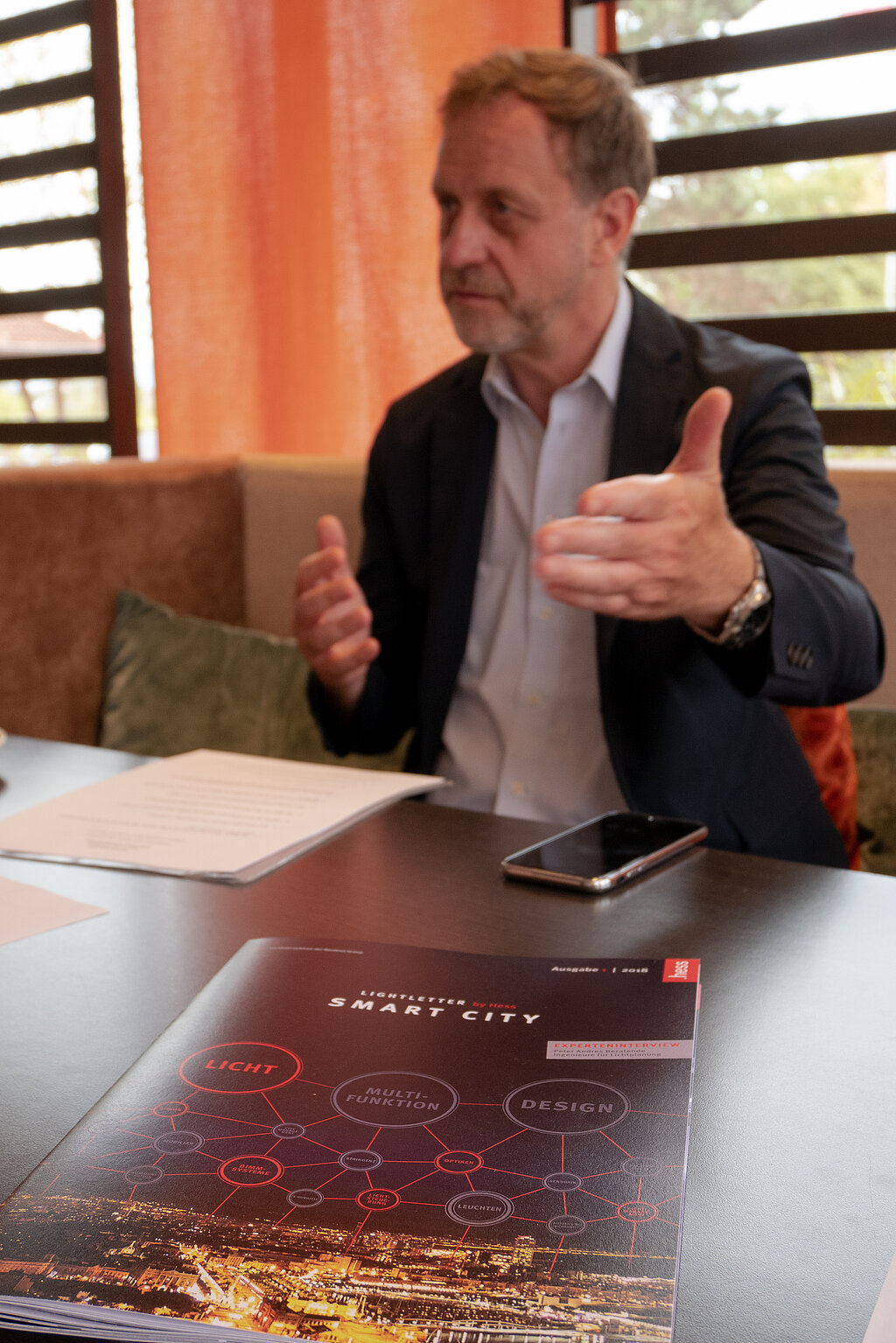
In our three-part series we use the example of public space to examine the interlinked, efficient and liveable city of the future. In the first issue of our Lightletter, we discussed the topic of “light”. Now we are dedicating an issue to “multifunctionality” in urban spaces. We gave Prof Lutz Heuser from [ui!] the urban institute®, a leading software and consulting company for digital Smart City solutions, the opportunity to speak on this topic in an interview.
Digitalisation as the key to future-oriented urban development
No time wasted in traffic jams, finding parking spaces faster, breathing cleaner air or even having less noise pollution – in short, more comfort and better quality of life in our day-to-day lives. This is what many residents want from their cities and municipalities. In the Smart City of tomorrow, this can become the norm.
The progression of urbanisation and its associated challenges – in infrastructure, mobility and energy, among other areas – are having an impact in almost all areas of society. A new way of thinking in regard to consumption, resources and the environment is necessary now more than ever.
Technological advances such as the Internet of Things (IoT) offer cities and municipalities the opportunity to provide intelligent solutions for an interlinked society and thus permanently improve the living conditions of residents in the interest of the common good. A Smart City uses innovative information and communication technologies to restructure urban processes and procedures in areas such as traffic management, public administration or supplying energy; it also uses these technologies make the processes faster, more transparent and more efficient.
However, this requires a lot of data. This data is captured by methods including the use of various sensors at selected points in the city, analysed on intelligent interfaces and offered in real-time services or applications in some cases. Everyone benefits from this digital Transformation – including the cities themselves: after all, integrated urban development meets the expectations and wishes of residents for a liveable city.
“Lighting” infrastructure forms the backbone of the digital revolution
Intelligent interlinking of urban infrastructures, virtual offices and flexible energy supply is currently being worked on in many places in the context of the Smart City concept. At the same time, cities and municipalities are challenged to create new interlinked infrastructure elements and to digitalise existing ones.
Outdoor lighting is a good starting point for the creation of smart urban infrastructure. Streetlights are everywhere in urban public spaces. Their finely woven distribution along streets, squares and paths forms a dense network of nodes which, in addition to lighting itself, can accommodate a wide variety of additional functions and smart services.
Cities and municipalities can expand this existing infrastructure into a smart digitalised system, housing functional modules in it from the areas of connectivity, sensor technology and energy systems with perfect integration. In terms of design, the cityscape will hardly be affected by this – if it is affected at all. At the same time, public spaces become more attractive through their transformation into places for meeting up and socialising, with a great deal of safety, communication and networking.
From a simple light pole to a multifunctional data collection point
Multifunctional luminaires already make a significant contribution to greater efficiency, safety and a pleasant atmosphere in the city as public WLAN hotspots, e-charging stations and points of contact for safety and emergency call functions or traffic data measuring devices. In future, you can expect interlinked luminaires to make further innovative applications and smart services possible and thus play a key role in the transition to a “Smart City”.

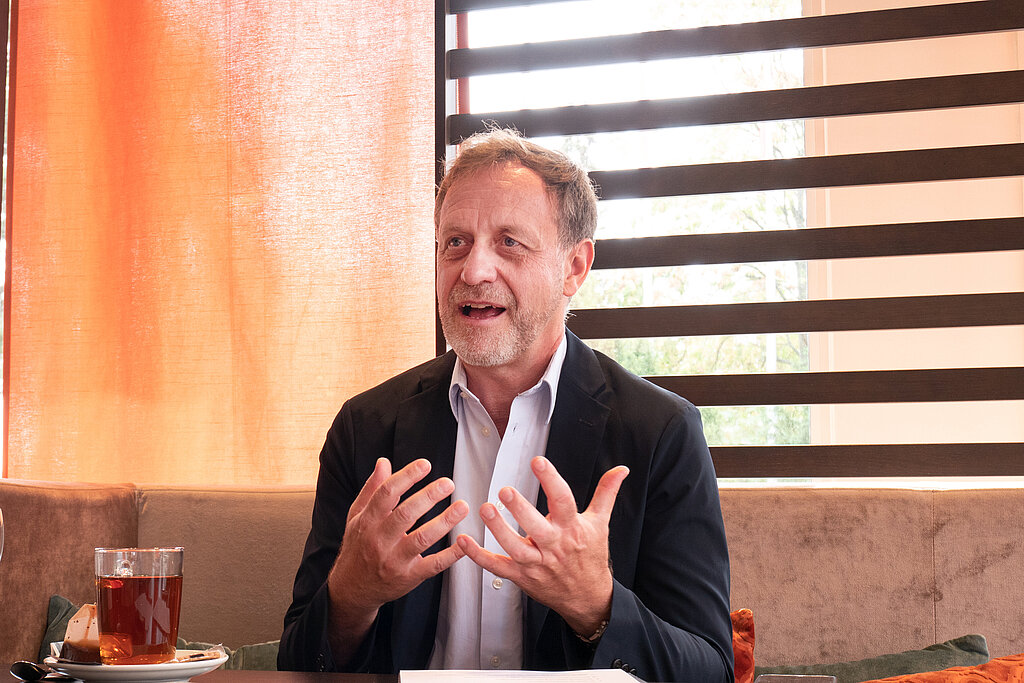
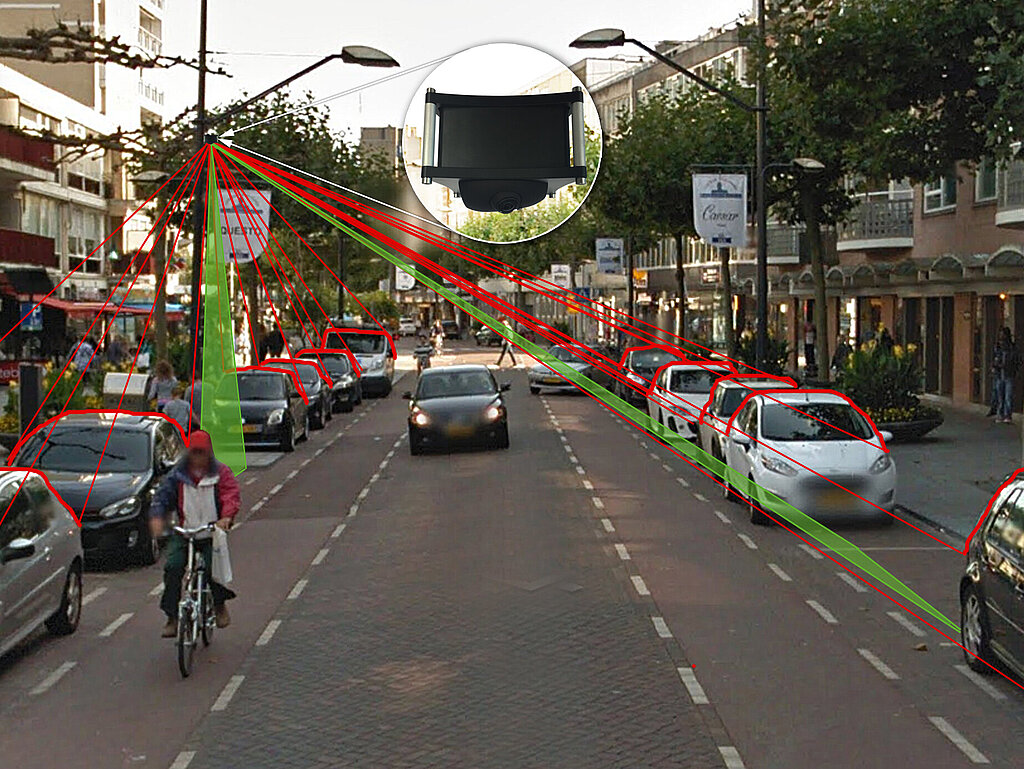
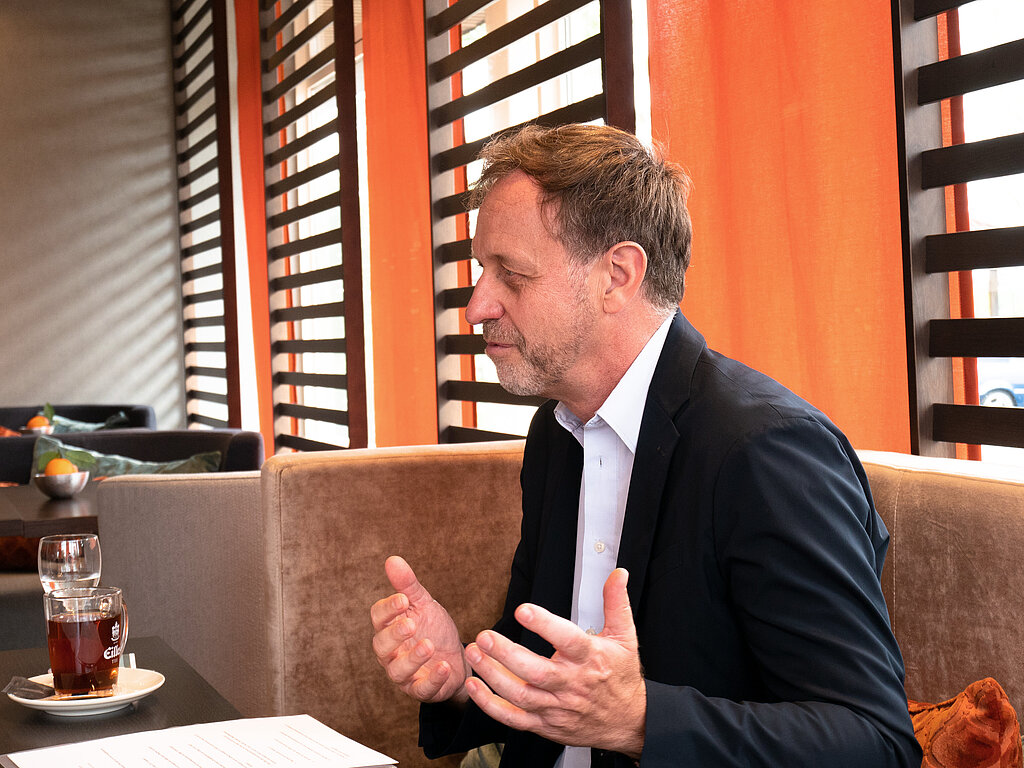
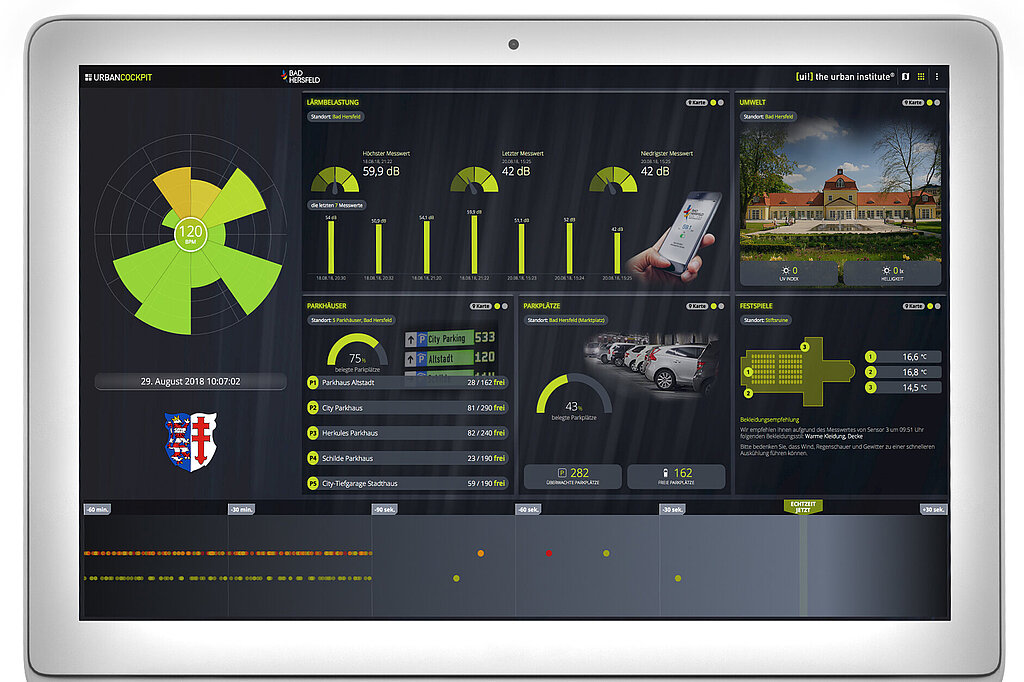
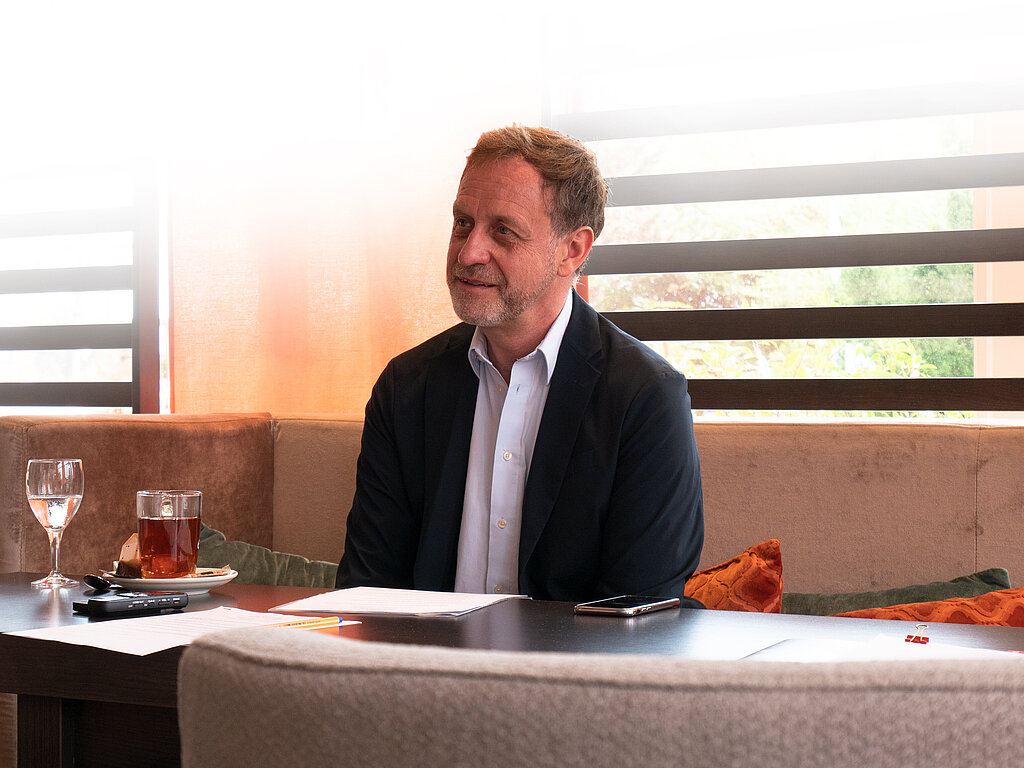
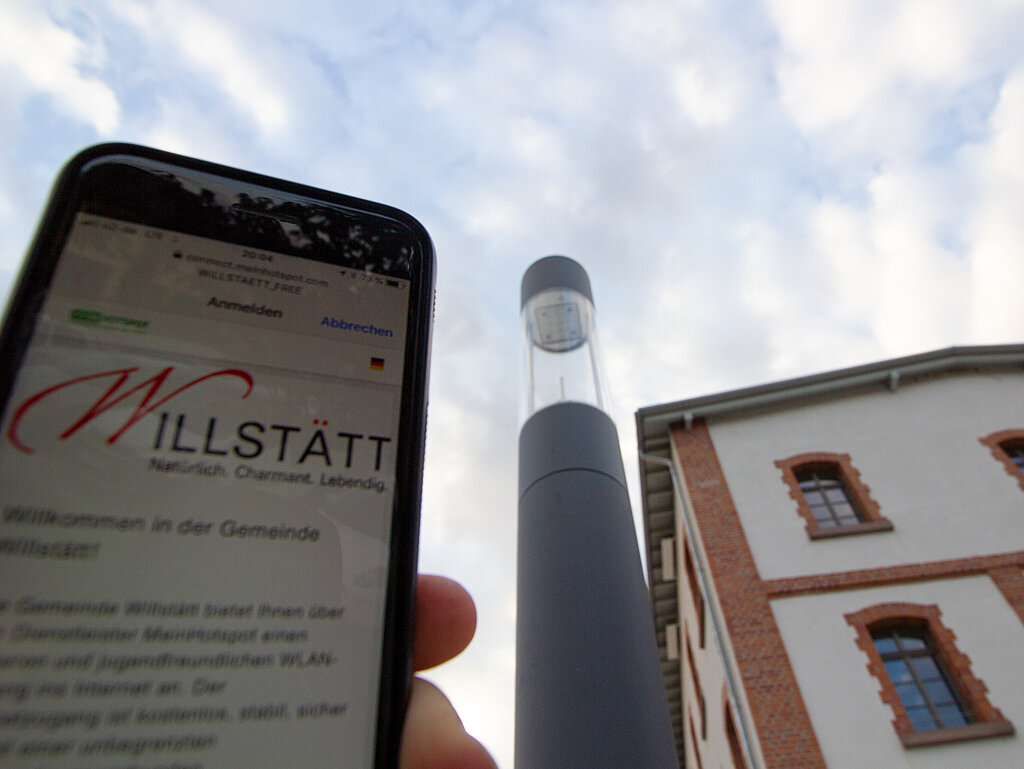
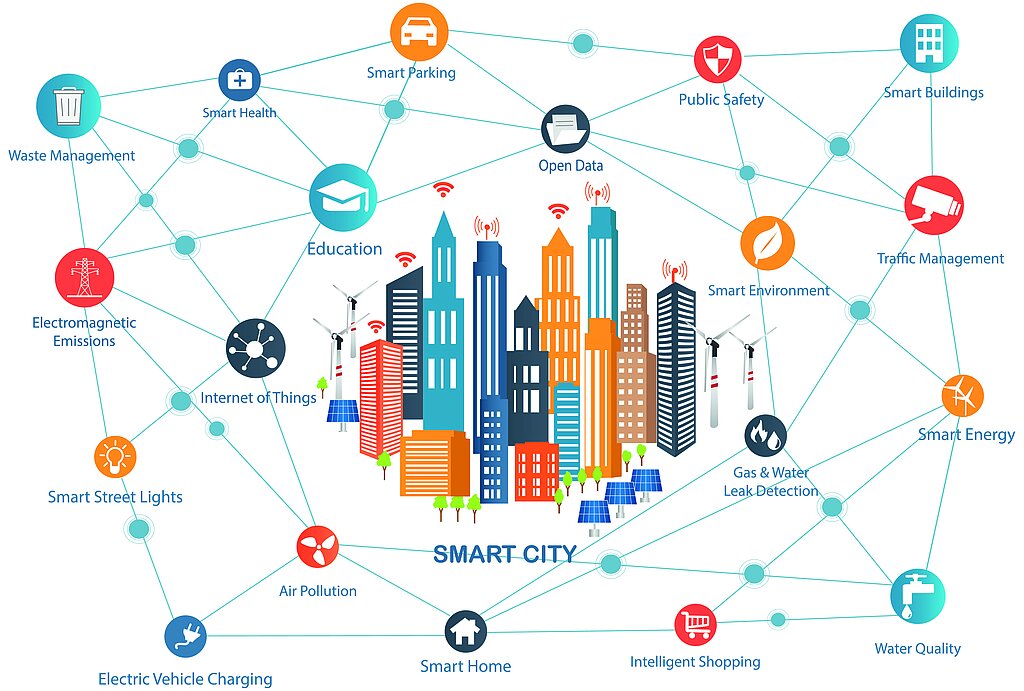
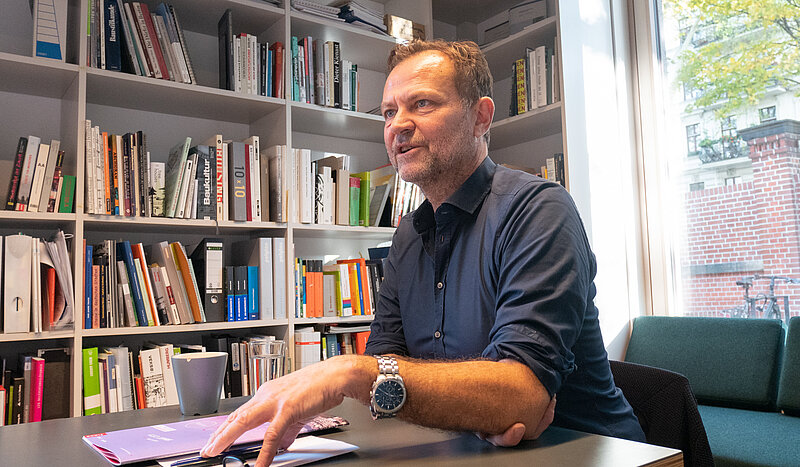
![[Translate to English:] [Translate to English:]](/fileadmin/_processed_/3/3/csm_P1020797_5295744701.jpg)